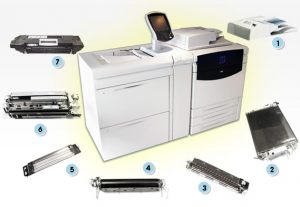Remanufacturing is the rebuilding of a product to specifications of the original manufactured product using a combination of reused, repaired and new parts. It requires the repair or replacement of worn out or obsolete components and modules. Parts subject to degradation affecting the performance or the expected life of the whole are replaced. Remanufacturing is a form of a product recovery process that differs from other recovery processes in its completeness: a remanufactured machine should match the same customer expectation as new machines.
 In 1995, the United States Environmental Protection Agency (EPA) implemented the Comprehensive Procurement Guideline (CPG) program to promote waste reduction and resource conservation through the use of materials recovered from solid waste, and to ensure that the materials collected in recycling programs will be used again in the manufacture of new products. The EPA is required to designate products that are or can be made with recovered materials, and to recommend practices for buying these products. Once a product is designated, state and federal procuring agencies are required to purchase it with the highest recovered material content level practicable.
In 1995, the United States Environmental Protection Agency (EPA) implemented the Comprehensive Procurement Guideline (CPG) program to promote waste reduction and resource conservation through the use of materials recovered from solid waste, and to ensure that the materials collected in recycling programs will be used again in the manufacture of new products. The EPA is required to designate products that are or can be made with recovered materials, and to recommend practices for buying these products. Once a product is designated, state and federal procuring agencies are required to purchase it with the highest recovered material content level practicable.
In 2004, the EPA published its third CPG update (CPG IV) which designated seven additional products and revised three existing product designations. One of the new product categories to be added was Rebuilt Vehicular Parts. The EPA defines rebuilt vehicular parts as “vehicle parts that have been re-manufactured, reusing parts in their original form. Rebuilt parts undergo an extensive re-manufacturing and testing process and must meet the same industry specifications for performance as new parts.”
In the UK, a market potential of up to 5.6 billion GBP has been identified in remanufacturing, with the benefits said to be improvement to business margins, revenues and security of supply.
